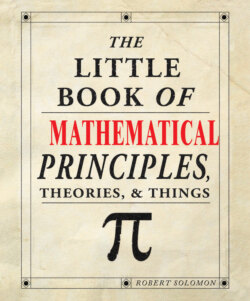Читать книгу The Little Book of Mathematical Principles, Theories & Things - Robert Solomon - Страница 36
На сайте Литреса книга снята с продажи.
628 AD India Zero Brahmagupta (598–665 AD)
ОглавлениеThe recognition that zero is a proper number.
_______________
Nowadays zero is an ordinary part of how we write numbers and calculate with them. It took a long time for it to be accepted as a proper number.
For most of recorded history the number system started with one. There was no number zero (0) when the system for dating years was devised in 525 AD. The system goes straight from 1 BC to 1 AD – there is no 0 AD.
There is no need for zero when using Roman numerals. The number 105 is CV (100 + 5) and we do not have to show there are no tens. By contrast, in a place value system, some indication is required.
Before modern times, arithmetic was done using a counting board, with one column for units, one column for 10s, one column for 100s, and so on. A symbol for zero isn’t required – just a space in the relevant column for the missing digit.
When writing numbers, it is useful to have a special symbol to show that a number is missing – such a symbol was used in Central America by indigenous peoples centuries ago. The Babylonians used two small wedges in their sexagesimal system.
Using a symbol for a missing digit in a place value system is not the same as recognizing zero as a number in its own right. That was invented by Indian mathematicians. In 628 AD Brahmagupta wrote out a set of rules for zero including:
• The sum of a zero and a positive number is positive.
• Zero divided by zero is zero.
Now we agree with the first but not the second. Division by zero is forbidden. If a car travels zero miles in zero hours, what is its speed? It is undefined.
